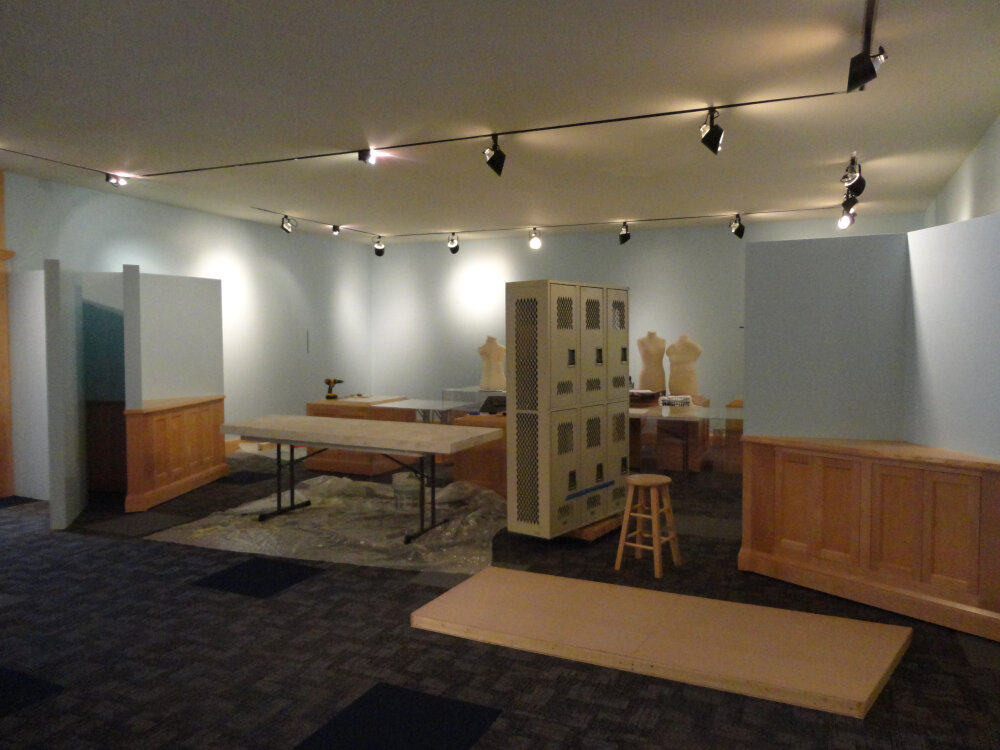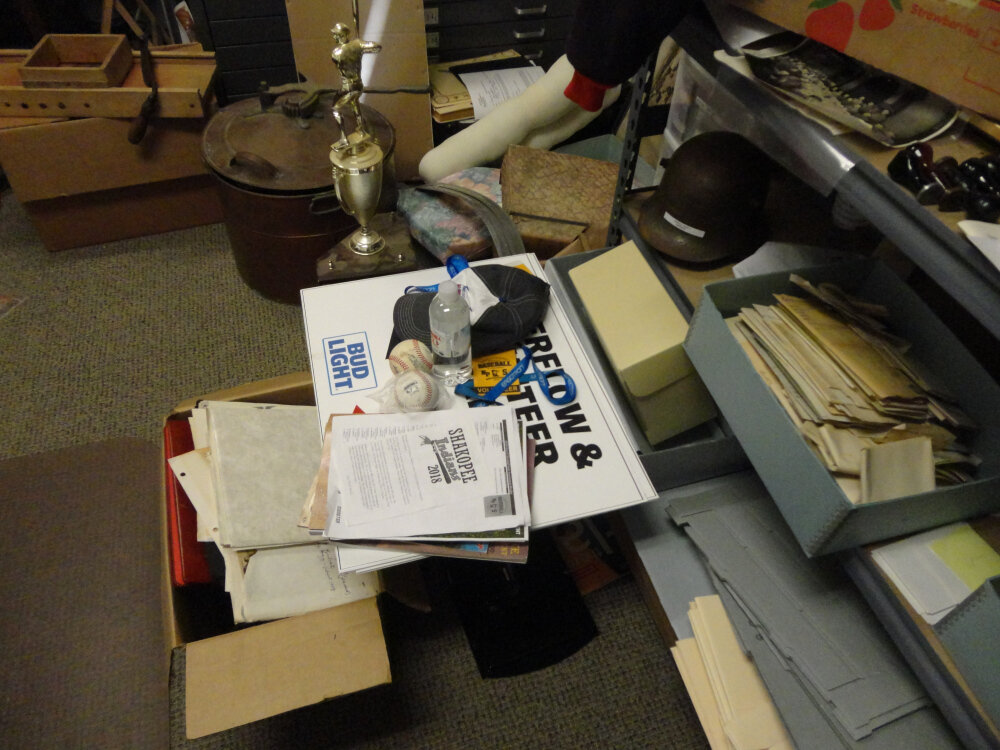The holiday baking season is upon us and one item of clothing will be getting plenty of use… the apron. Aprons have survived thousands of years as practical, functional clothing items; they served as towels, pot holders, baskets, and more. Historically, the apron has engendered the feminine aura of domesticity. Some women adorned themselves with the apron as a mantle of pride, a symbol of homemaking, motherhood and nurturing. Yet others felt it a symbol of constraint or oppression. Despite this, women found ways to be creative and resourceful, making them equally objects of skill and art. The apron may be a simple object, but is firmly associated with home, motherhood, comfort, work, and servitude.
Early aprons were made from muslin, silk, and serge, and formed part of the dress for special occasions as well as everyday wear. Aprons in the early 1700s were in regular use to protect clothing and were usually a simple rectangular piece of fabric fastened with ties or a belt. By the end of the century, they were fashionable, particularly for upper-class women, and decorated with embroidery and drawn work. The dainty apron of the 1800s became the small tea apron pinned on – and became called the “pinner”, and was often the badge of the parlor maid.
Aprons gained popularity in Victorian England. The ideals of femininity and domesticity ensured their status as upper-class women wore them adorned with embroidery and hand-made lace. It was around the early part of the 1900s that aprons began to slowly diminish in size, previously covering the wearer from neck to toe.
During the 1920s, the apron returned to its practical uses, but in a new style. The “Hooverette”, a loose, wrap-around apron, was influenced by the drop-waist, straight-lined dresses of the time. By the 1930s, the apron ended at the knees and the upper bib portion became smaller. During the Great Depression, a resurgence in home crafts resulted in many hand-embroidered aprons. Instead of the traditional white cotton or linen, women used what was available, including flour sacks and clothing scraps. Aprons weren’t merely decorative, they meant hard work, often by members of an unpaid labor force. Despite that, wearers found a way to be resourceful and creative.
By the 1940s, aprons decorated with rick-rack and made of calicos and floral prints became symbols of pride. Flour sacks could be edged with stripes, ribbons, or ruffles. By the 1950s the cocktail apron became a fashion statement. Summoning glamour, they weren’t created for protection. The bib portion was gone, and the length was shortened to well above the knees. Fashion was more important than practicality.
The 1940’s and 1950s were the heyday of aprons, when commercial and intricately hand-decorated aprons flourished as symbols of family and motherhood. The TV family of the 1950s included the perfect housewife and mother, proudly wearing an apron as a symbol of her occupation. Apron kits became popular, but women continued to make their own. Hostess-aprons of sheer organdy trimmed with lace were more ceremonial than functional. Another change emerged in the 1950s – backyard barbecues, which allowed men to handle the cooking duties. Aprons for “Dad” covered his larger size and many had whimsical pictures and sayings printed on the front.
In the 1960s aprons plummeted out of fashion, seen as housewifely accoutrements that symbolized a secondary role for women. The apron became a frivolous item. This was also a time of washers and dryers, and better detergent. Ready-made, easy-to-change clothing became cheaper so the need to protect and cover clothes disappeared. By the 1970s, aprons were again utilitarian in nature, relegated to waiters and cooks at the barbecue. The bib returned, and fabric became heavy-duty. Women began to work outside the home more, but cooking duties were still largely her responsibility. The more protective apron allowed women to cover their business clothes as they started dinner.
In recent years, planned menu and scratch cooking have become recreational activities and relegated to the weekend. Today’s aprons fit any size of wearer and are not gender specific, but their use continues to be limited to the kitchen and barbecue. However, snazzy / snappy sayings and beautiful fabrics are still popular today.
Apron etymology: Middle English, alteration of napron, from Middle French, naperon, diminutive of nape cloth, modification of Latin mappa napkin.
Apron: a garment usually of cloth, plastic, or leather usually tied around the waist and used to protect clothing or adorn a costume.
Apron String: the string of an apron – usually used in plural as a symbol of dominance or complete control.
Idiom: “tied to your mother’s apron strings”; wholly depended on or controlled by a woman, especially one’s mother or wife. This expression, dating from the early 1800s probably alluded to Apron String Tenure, a 17th Century law that allowed a husband to control his wife’s and her family’s property during her lifetime. In other words: a husband could only hold title passed on by his wife’s family, only while the wife was alive.
From the SCHS 2003 exhibit, “Aprons: Tie One One”








